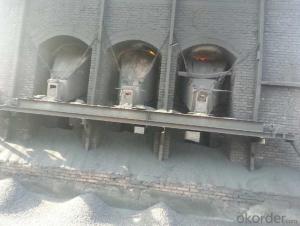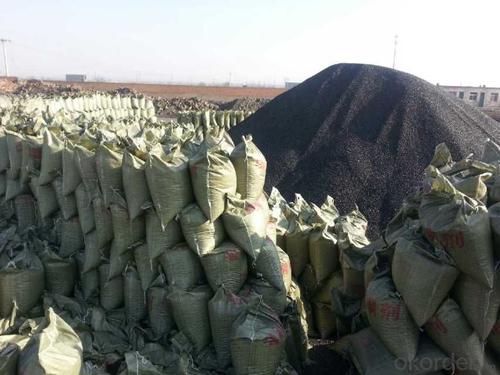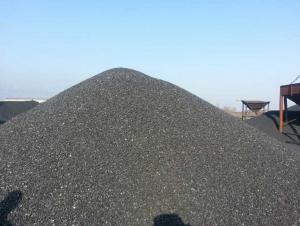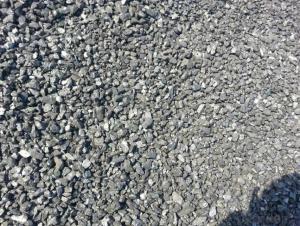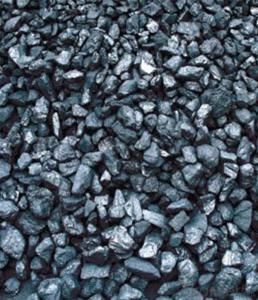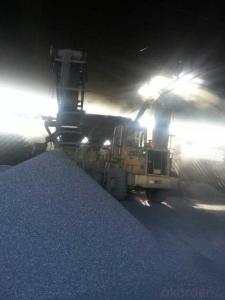Injection carbon FC80-90 with stable quality
- Loading Port:
- Tianjin
- Payment Terms:
- TT OR LC
- Min Order Qty:
- 20 m.t.
- Supply Capability:
- 3000 m.t./month
OKorder Service Pledge
OKorder Financial Service
You Might Also Like
Packaging & Delivery
25kgs/50kgs/1ton per bag or as buyer's request
Specifications
Calcined Anthracite
Fixed carbon: 90%-95%
S: 0.5% max
Size: 0-3. 3-5.3-15 or as request
It used the high quality anthracite as raw materials through high temperature calcined at over 2000 by the DC electric calciner with results in eliminating the moisture and volatile matter from anthracite efficiently, improving the density and the electric conductivity and strengthening the mechanical strength and anti-oxidation. It has good characteristics with low ash, low resistvity, low sulphur, high carbon and high density. It is the best material for high quality carbon products.
Advantage and competitive of caclined anthracite:
1. strong supply capability
2. fast transportation
3. lower and reasonable price for your reference
4.low sulphur, low ash
5.fixed carbon:95% -90%
6..sulphur:lower than 0.3%
General Specification of Calcined Anthracite:
| FC | 80 | 83 | 85 | 88 | 90 |
| ASH | 16 | 14 | 13 | 10 | 8.5 |
| V.M. | 3 | 3 | 2 | 2 | 1.5 |
| S | 0.5 | 0.5 | 0.5 | 0.5 | 0.35 |
| MOISTURE | 2 | 2 | 1 | 1 | 0.5 |
Pictures
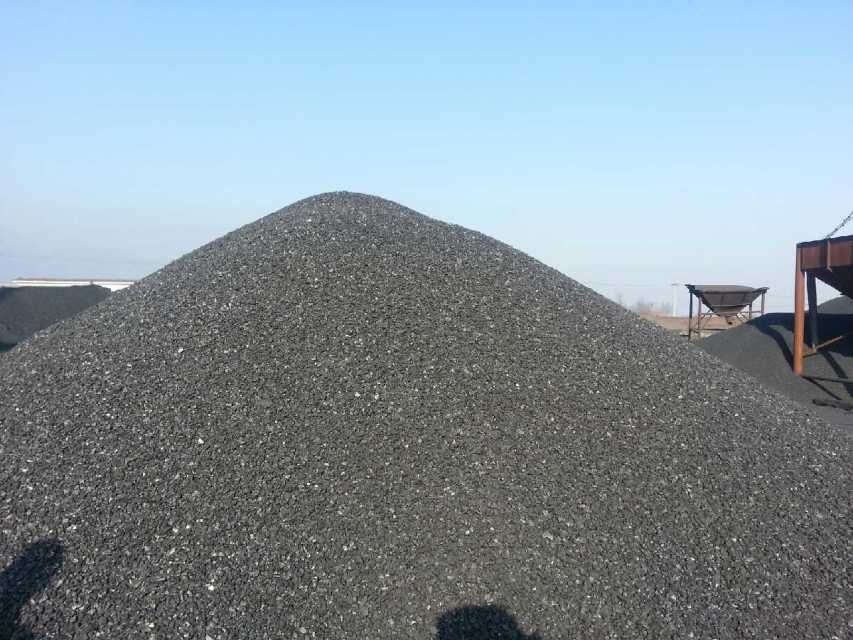
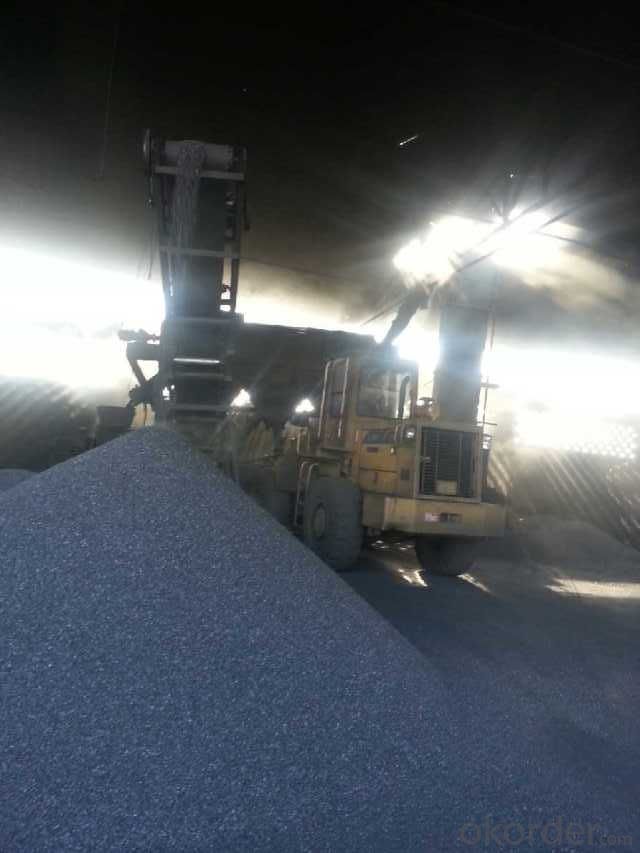
We are also strong at below materials, please contact us if you are interested in any of them:
Calcined Petroleum Coke
Carbon Electrode Paste
Carbon Electrode
- Q: Which is better, 13 and 14 carbon breath tests?
- The following is the range of feesC14- carbon 14 breath test, each province Price Bureau regulations are different, 95-120 yuanC13- carbon 13 breath test, 150-220 yuan
- Q: How are carbon markets regulated?
- The integrity and transparency of emissions trading in carbon markets are ensured through a combination of international, national, and regional frameworks. The United Nations Framework Convention on Climate Change (UNFCCC) is a key international body responsible for overseeing carbon markets. It established both the Kyoto Protocol and the Paris Agreement. The Kyoto Protocol established an international emissions trading system that allows countries to trade emission allowances through the Clean Development Mechanism (CDM) and Joint Implementation (JI) projects. These projects are approved and monitored by the UNFCCC to ensure that emission reductions are genuine, measurable, and additional to what would have occurred without the projects. The Paris Agreement, which succeeded the Kyoto Protocol, introduced the Sustainable Development Mechanism (SDM), a new market mechanism. The SDM is designed to promote sustainable development and assist countries in achieving their climate goals by enabling emission reductions and removals through projects in developing countries. At the national and regional levels, governments and regulatory bodies play a vital role in carbon market regulation. They establish legal frameworks, set emission reduction targets, and develop domestic emissions trading systems. These systems involve the allocation of emission allowances to companies or sectors, monitoring and reporting of emissions, and the trading of allowances on regulated platforms. To maintain the integrity of carbon markets, stringent regulations are in place to prevent fraud, double-counting, and other forms of market manipulation. Independent verification and accreditation bodies are responsible for auditing emissions data and project methodologies to ensure compliance with established rules and standards. Additionally, market oversight and enforcement bodies are established to monitor and enforce compliance with regulations. These bodies have the authority to investigate and penalize non-compliance, including imposing fines or revoking emission allowances. In summary, the regulation of carbon markets encompasses a complex network of international agreements, national laws, and regulatory bodies. The objective is to establish a strong and transparent market that incentivizes emission reductions and supports the transition to a low-carbon economy.
- Q: How do forests act as carbon sinks?
- Forests act as carbon sinks by absorbing carbon dioxide from the atmosphere through the process of photosynthesis. Trees and other plants take in carbon dioxide and convert it into oxygen, while storing the carbon in their trunks, branches, and roots. This stored carbon remains in the forest ecosystem, reducing the amount of greenhouse gases in the atmosphere and helping to mitigate climate change.
- Q: How does carbon dioxide affect fuel efficiency?
- Fuel efficiency in vehicles is primarily influenced by factors such as engine efficiency, weight, aerodynamics, and driving conditions. Carbon dioxide, on the other hand, is a byproduct of burning fossil fuels, commonly used as vehicle fuel. When fossil fuels are burned, carbon dioxide is released into the atmosphere, contributing to the greenhouse effect and climate change. However, it is important to note that the increased concentration of carbon dioxide in the atmosphere does not directly impact fuel efficiency. Despite this, reducing carbon dioxide emissions remains crucial for mitigating climate change and promoting a sustainable future.
- Q: How does carbon impact the ozone layer?
- Carbon does not directly impact the ozone layer. However, carbon compounds such as chlorofluorocarbons (CFCs), which contain carbon, can have a significant impact on the ozone layer. When released into the atmosphere, CFCs can reach the stratosphere where they are broken down by ultraviolet (UV) radiation and release chlorine atoms. These chlorine atoms then catalytically destroy ozone molecules, leading to the depletion of the ozone layer. The destruction of the ozone layer is a critical environmental issue as it allows more harmful UV radiation from the sun to reach the Earth's surface. Increased UV radiation can have detrimental effects on human health, including skin cancer, cataracts, and weakened immune systems. It can also harm ecosystems by damaging phytoplankton, which are crucial for the marine food chain, and affecting the growth of plants and crops. To combat this problem, the international community has taken steps to reduce the production and use of ozone-depleting substances, including CFCs. The Montreal Protocol, an international environmental agreement, has been successful in phasing out the production of CFCs and other harmful substances. This has contributed to the recovery of the ozone layer, although it is still a long-term process. In conclusion, carbon itself does not directly impact the ozone layer. However, carbon compounds like CFCs, which are released into the atmosphere, can lead to the destruction of the ozone layer. Efforts to reduce the production and use of these ozone-depleting substances have been crucial in protecting the ozone layer and mitigating the harmful effects of increased UV radiation.
- Q: How does carbon cycle through the environment?
- The carbon cycle is the process by which carbon moves between the atmosphere, land, oceans, and living organisms in a continuous cycle. It is crucial for maintaining a stable climate and supporting life on Earth. The cycle begins with carbon dioxide (CO2) in the atmosphere, which is absorbed by plants during photosynthesis. Through this process, plants convert CO2 into organic carbon compounds, such as sugars and carbohydrates, which they use for growth and energy. This carbon is then passed along the food chain as animals consume plants or other animals. When plants and animals die or excrete waste, their organic matter decomposes, releasing carbon back into the environment. This decomposition process is carried out by microorganisms, such as bacteria and fungi, which break down the organic matter and release carbon dioxide as a byproduct. Some carbon may be stored in the soil for long periods, depending on factors like temperature and moisture. This stored carbon in the soil can be released back into the atmosphere through processes like microbial respiration or erosion. Another way carbon returns to the atmosphere is through the burning of fossil fuels such as coal, oil, and natural gas. When these fuels are burned for energy, they release carbon dioxide into the atmosphere, contributing to the greenhouse effect and climate change. The oceans also play a crucial role in the carbon cycle. They absorb a significant amount of carbon dioxide from the atmosphere through a process called carbon sequestration. Marine plants, such as phytoplankton, also photosynthesize and store carbon in their tissues. When these organisms die, they sink to the ocean floor, where the carbon can be stored for long periods in the form of sediment or dissolved in the water. Oceanic circulation and biological processes also redistribute carbon throughout the oceans, with surface water exchanging carbon with the atmosphere. Additionally, the oceans act as a carbon sink, as they can store vast amounts of carbon dioxide, helping to regulate its levels in the atmosphere. Overall, the carbon cycle is a complex and interconnected process that involves various natural and human activities. Understanding and managing this cycle is crucial for mitigating climate change and maintaining the health of our environment.
- Q: Stability, primary carbon, two carbon, three carbon, four carbon
- From a variety of hydrogen is substituted alkyl free radicals generated in terms of difficulty order can have free radicals for the formation of tertiary carbon free radical secondary carbon free primary carbon free radicals. Alkyl radicals generated methyl easily, can be explained from two aspects: (1) different required to form free radicals when the fracture of C-H the energy, the (CH3) 3C-H fracture, the energy required for the smallest, most easily generated.
- Q: What are the impacts of carbon emissions on the stability of kelp forests?
- Kelp forests are significantly affected by carbon emissions, which have a major impact on their stability. The increased levels of carbon dioxide in the atmosphere lead to ocean acidification, causing harmful effects on kelp. When carbon dioxide dissolves in seawater, it creates carbonic acid, which lowers the ocean's pH. This acidification prevents kelp from growing and developing properly, making them more vulnerable to stressors and reducing their overall stability. Ocean acidification affects kelp physiology in various ways. It impairs their ability to absorb essential nutrients like nitrogen and phosphorus, which are crucial for their growth. This nutrient deficiency weakens the kelp, making them more susceptible to diseases, predation, and damage from storms. Moreover, acidified seawater hinders the development of kelp spores, which impairs their ability to reproduce and regenerate kelp forests. Furthermore, carbon emissions contribute to the increase in sea temperatures, which also harm kelp forests. As the climate warms, kelp may face thermal stress, resulting in slower growth rates and higher mortality rates. Warmer waters also create favorable conditions for harmful algae species, which can outcompete kelp for space and resources, further destabilizing kelp forests. The stability of kelp forests is crucial because they provide numerous ecosystem services. They act as important carbon sinks, absorbing and storing large amounts of carbon dioxide from the atmosphere. Kelp forests also serve as habitats and nursery grounds for a wide range of marine species, including commercially important fish and invertebrates. They play a vital role in maintaining the health and productivity of coastal ecosystems by reducing coastal erosion, improving water quality, and supporting biodiversity. To mitigate the impacts of carbon emissions on kelp forests, it is crucial to reduce our carbon footprint by transitioning to cleaner and more sustainable energy sources. Additionally, protecting and restoring coastal habitats, including kelp forests, can enhance their resilience to climate change and other stressors. Implementing sustainable fishing practices and establishing marine protected areas can also help preserve and maintain the stability of kelp forests and the valuable ecosystem services they provide.
- Q: How does carbon impact the availability of clean air?
- Carbon impacts the availability of clean air through its contribution to air pollution and climate change. When carbon-based fuels such as coal, oil, and natural gas are burned for energy production, they release carbon dioxide (CO2) into the atmosphere. CO2 is a greenhouse gas that traps heat in the Earth's atmosphere, causing the planet to warm up, leading to climate change. Climate change, in turn, affects air quality in several ways. Rising temperatures can increase the frequency and intensity of wildfires, which release large amounts of carbon dioxide and other pollutants into the air. Additionally, higher temperatures can exacerbate the formation of ground-level ozone, a harmful air pollutant that can trigger respiratory issues and other health problems. Furthermore, carbon emissions contribute to the formation of particulate matter, such as soot and fine particles, which can be harmful when inhaled. These particles can come from the burning of fossil fuels in vehicles, power plants, and industrial processes. Particulate matter can cause respiratory and cardiovascular problems and is especially harmful to vulnerable populations like children, the elderly, and those with pre-existing respiratory conditions. Reducing carbon emissions is crucial to improving air quality and ensuring the availability of clean air. Transitioning to renewable energy sources, improving energy efficiency, and implementing policies to reduce carbon emissions can all help mitigate the impact of carbon on air quality. Additionally, promoting sustainable transportation, reducing deforestation, and adopting cleaner industrial practices can contribute to cleaner air by reducing carbon emissions and other pollutants.
- Q: What is carbon neutral tourism?
- Carbon neutral tourism refers to a type of tourism that aims to minimize or offset the carbon emissions generated by travel activities. It involves implementing sustainable practices, such as using renewable energy sources, promoting energy efficiency, and supporting carbon offset projects. The goal is to achieve a balance between the amount of carbon emitted and the amount removed from the atmosphere, thus reducing the overall carbon footprint of the tourism industry.
Send your message to us
Injection carbon FC80-90 with stable quality
- Loading Port:
- Tianjin
- Payment Terms:
- TT OR LC
- Min Order Qty:
- 20 m.t.
- Supply Capability:
- 3000 m.t./month
OKorder Service Pledge
OKorder Financial Service
Similar products
Hot products
Hot Searches
